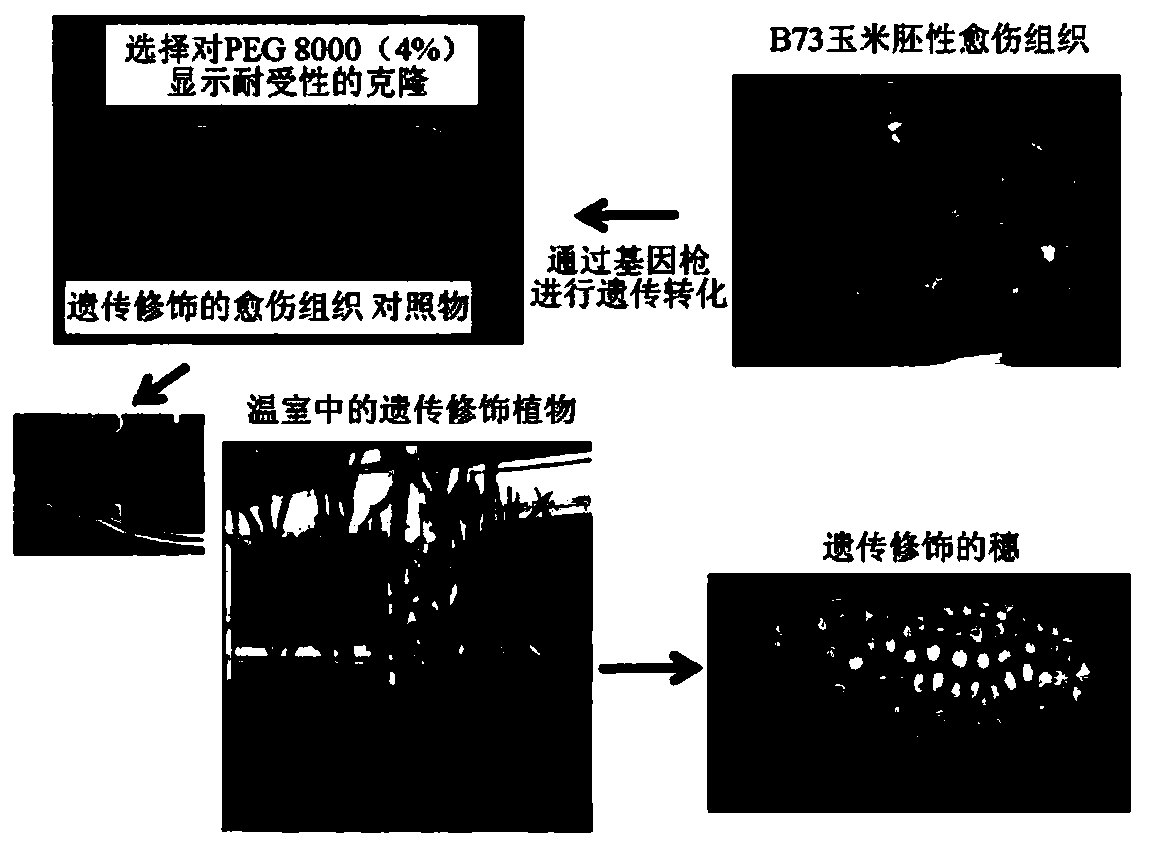Methods to obtain drought resistant plants
A plant and plant cell technology, applied in biochemical equipment and methods, using vectors to introduce foreign genetic material, enzymes, etc., can solve problems such as screening methods that have not been proposed
- Summary
- Abstract
- Description
- Claims
- Application Information
AI Technical Summary
Problems solved by technology
Method used
Image
Examples
example 1
[0085] Example 1. Materials and methods
[0086] a) Nucleic acid manipulation
[0087] plasmid DNA. Isolation procedures, restriction, conjugation and transformation of bacterial plasmid DNA were performed according to standard protocols (Sambrook et al., 1989 (Sambrook et al., 1989)). About carrier TOPO (Invitrogen, Inc.) ligation of PCR products was performed according to the manufacturer's instructions. From small scale preparations by RT-PCR, 3'RACE and Sequencing of the obtained fragments.
[0088] plant DNA. To clone the promoting sequence rd29A of Arabidopsis thaliana, phenol:chloroform extraction of genomic DNA was performed from Arabidopsis plants germinated for 10 days in MS medium with 0.7% agar.
[0089] Plant RNA. For cDNA cloning of the trehalase gene from alfalfa, TRI was used according to the manufacturer's instructions. (Molecular Research Center, Inc.), from alfalfa (M. sativa cv. CUF-101) germinated in vitro on MS medium with 0.8% agar for 7 da...
example 2
[0097] cDNA Cloning of Example 2.MsTRE Medicago Gene
[0098] Since the sequence encoding the trehalase from Medicago sativa (termed MsTRE (Ms: Medicago; TRE: trehalase)) was not reported and in order to obtain a fragment for use in a construct inhibiting this enzyme, it was set out to obtain its The complete sequence of DNA. Therefore used: a protocol based on the amplification (RT) of this gene transcript and its subsequent PCR amplification (RT-PCR).
[0099] a) Internal fragment amplification by RT reverse transcription and PCR (RT-PCR)
[0100] A simple test of RT-PCR using the degenerate oligonucleotides Tre300 and Tre351 for the amplification of internal fragments of the cDNA was based on the Brassica thaliana trehalase (Arabidopsis thaliana; deposit accession number AAF22127), potato (potato; accession number A67882) and soybean (glycine max; accession number AAD22970) in the conserved region. Sequence alignment was performed using the Clustal method (DNA Star Softw...
example 3
[0110] Example 3. Design of antisense TRE sequences (TREas) and interfering RNA (Tre-RNAi)
[0111] a) Amplification and cloning of TRE internal fragments with large homology between species.
[0112] In order to express the antisense sequence of trehalase under the promoters 35S and rd29A in plants, a fragment (SEQ.ID.No.18) containing a 560bp sequence internal fragment was first selected, which includes conserved among different plant trehalases small area. To this end, a pair of specific oligonucleotides Tre333 and TreNsiRw was designed, which amplifies an internal fragment (TRE) selected from the DNA plasmid of the vector TOPO-3Tre. The TreNsiRw oligo introduced an Xma I site followed by an Nsi I site into the 3' end of the sequence. Cloning the amplified product into the vector TOPO TA In , the plasmids TOPO-tre560s and TOPO-tre560as were generated due to the bidirectional insertion of the fragments into the vector. In both constructs, the insert is flanked by the Sa...
PUM
 Login to View More
Login to View More Abstract
Description
Claims
Application Information
 Login to View More
Login to View More - R&D
- Intellectual Property
- Life Sciences
- Materials
- Tech Scout
- Unparalleled Data Quality
- Higher Quality Content
- 60% Fewer Hallucinations
Browse by: Latest US Patents, China's latest patents, Technical Efficacy Thesaurus, Application Domain, Technology Topic, Popular Technical Reports.
© 2025 PatSnap. All rights reserved.Legal|Privacy policy|Modern Slavery Act Transparency Statement|Sitemap|About US| Contact US: help@patsnap.com



